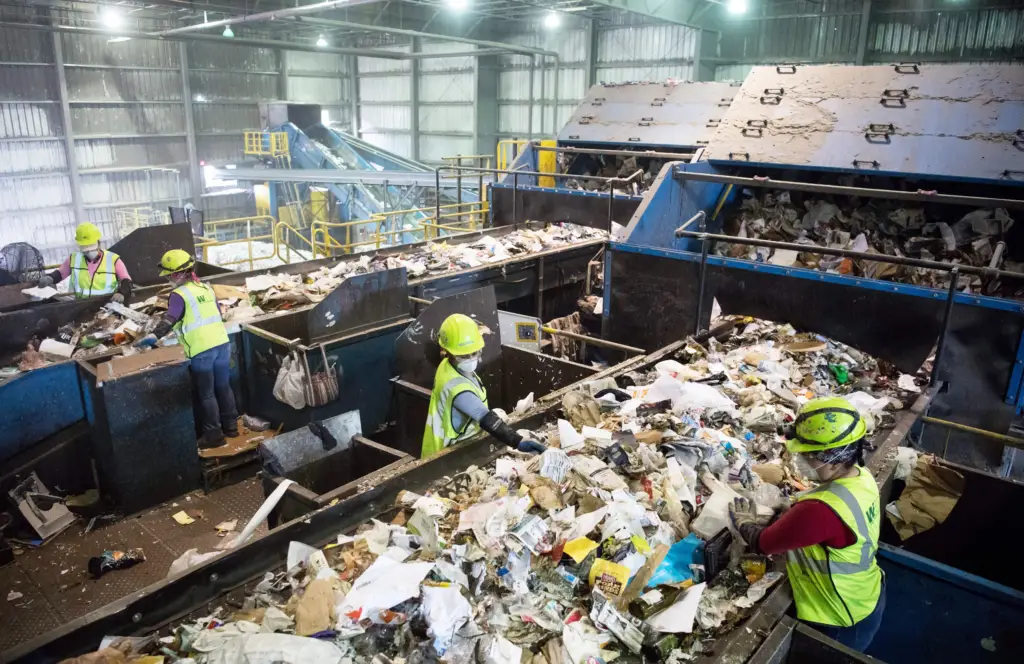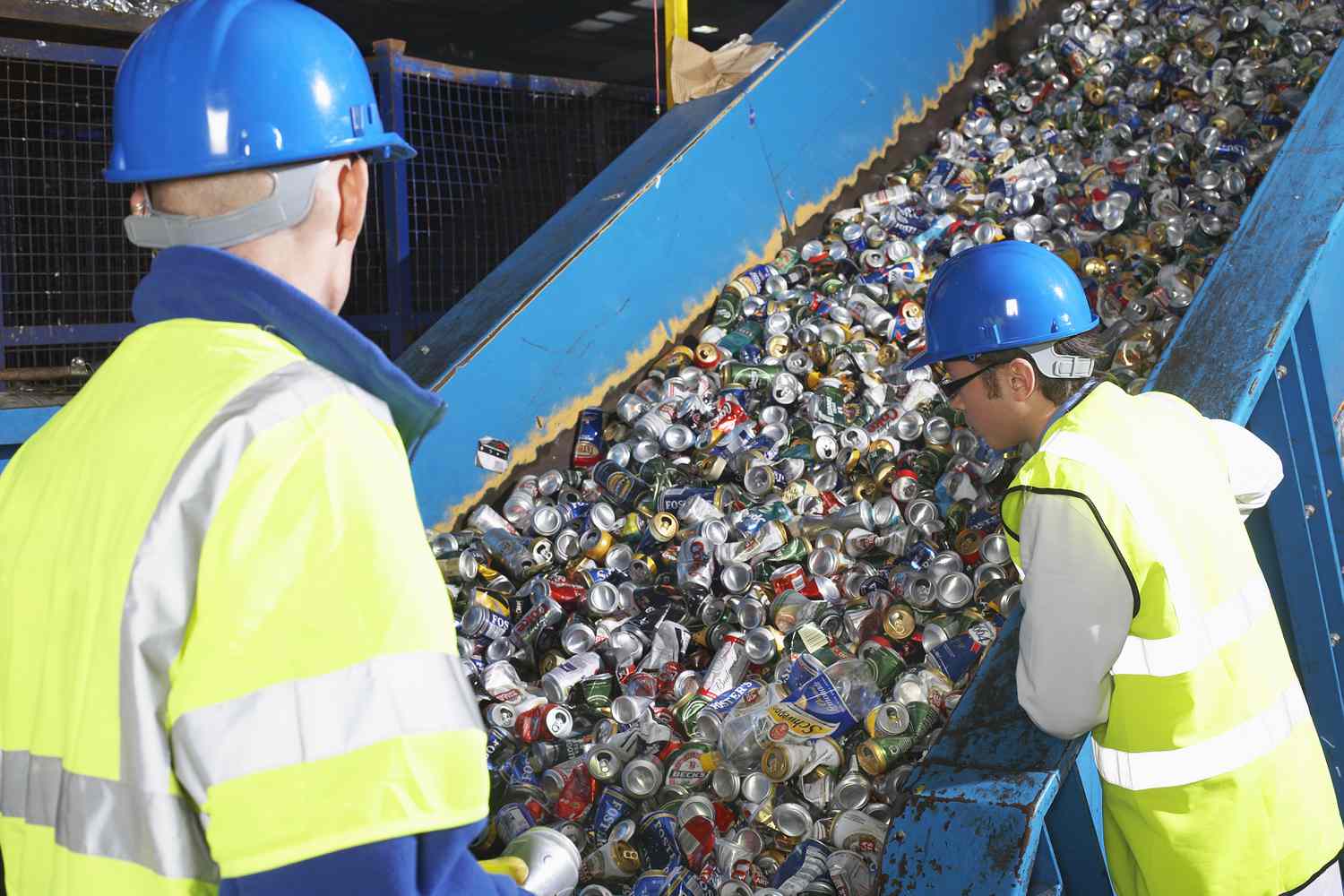Waste disposal is an issue of paramount importance in the United States, with profound implications for public health, environmental sustainability, and resource management.
The management of waste has evolved over the years, and the United States now faces a multifaceted challenge in dealing with its growing waste stream.
This article provides a comprehensive overview of America’s waste disposal, examining the current state of waste management, the challenges it poses, and potential solutions to address these challenges.
The State of Waste Management in the United States
The United States generates an enormous amount of waste every year, and the methods for managing this waste have evolved significantly over time. Today, waste management in the United States primarily involves the following key components:
1. Municipal Solid Waste (MSW)
Municipal Solid Waste, commonly referred to as MSW, includes everyday items like packaging, clothing, food scraps, and other disposable products.
In the United States, MSW accounts for the largest portion of the waste stream. According to the Environmental Protection Agency (EPA), in 2018, the country generated over 292 million tons of MSW, equivalent to 4.9 pounds per person per day.
The primary methods of dealing with MSW include landfilling and incineration. Landfills are the most common disposal method for MSW, while incineration is used in some areas to reduce the volume of waste and generate energy.
2. Recycling
Recycling has gained significant importance as a method for diverting waste from landfills and conserving valuable resources.
Many communities in the United States have established recycling programs, where citizens are encouraged to separate recyclable materials like paper, plastic, glass, and metals from their regular trash. These materials are then processed and reused to create new products.
3. Hazardous Waste In America
Hazardous waste includes materials that pose a risk to human health or the environment. It encompasses a wide range of substances, from chemicals used in manufacturing to medical waste.
Hazardous waste is strictly regulated in the United States to ensure proper disposal and prevent contamination. Facilities that handle hazardous waste must adhere to stringent environmental and safety regulations.
Challenges in America’s Waste Disposal

Despite the efforts made in waste management, the United States faces several challenges in dealing with its waste. These challenges include:
1. Overreliance on Landfills
Landfills are still the most common method of disposing of MSW in the United States. While they have become more environmentally regulated and controlled, they are not a sustainable long-term solution.
Landfills take up significant land space, pose potential environmental hazards, and emit greenhouse gases as the waste decomposes.
2. Recycling Rates
Although recycling programs have expanded, recycling rates in the United States are still not as high as they could be. Barriers to recycling include limited access to recycling facilities in some areas, confusion about what can be recycled, and lack of motivation among individuals to recycle consistently.
3. E-Waste Proliferation
E-waste poses a unique set of challenges. It contains valuable materials that can be reused and recycled, but its improper disposal can lead to environmental contamination.
Many people still do not know how to dispose of electronic devices properly, leading to e-waste ending up in landfills or being shipped to developing countries with lax regulations.
Read Also: The 3Rs to Properly Manage Solid Wastes Properly
The Role of Government and Legislation In America’s Waste Disposal
The United States has a complex web of federal, state, and local laws and regulations governing waste disposal and management. The Environmental Protection Agency (EPA) plays a central role in setting federal standards and guidelines for waste management, while individual states and municipalities often have their regulations and programs.
One of the most significant pieces of federal legislation related to waste management is the Resource Conservation and Recovery Act (RCRA).
Enacted in 1976, RCRA established a regulatory framework for managing hazardous waste, including its generation, transportation, treatment, storage, and disposal.
Additionally, the Comprehensive Environmental Response, Compensation, and Liability Act (CERCLA), commonly known as the Superfund program, provides a legal mechanism for the cleanup of contaminated sites and requires parties responsible for hazardous waste to bear the financial burden of cleanup.
At the state level, many states have their waste management laws and regulations, and they often work in conjunction with federal guidelines to create a more comprehensive waste management system. Municipalities may also enact local ordinances to address waste disposal specific to their communities.
1. Recycling Initiatives and Programs
Recycling is a critical component of waste management that can help conserve resources and reduce the environmental impact of waste disposal.
In response to the challenges of low recycling rates, many communities in the United States have initiated recycling programs to encourage individuals and businesses to recycle.
These programs often involve curbside pickup of recyclables, drop-off centers, and public education campaigns to inform residents about what can and cannot be recycled. Some states have implemented bottle deposit laws, which provide financial incentives for returning beverage containers for recycling.
To further promote recycling, some states have adopted Extended Producer Responsibility (EPR) laws, which shift the responsibility for managing the waste of certain products from consumers to the manufacturers.
EPR encourages manufacturers to design products with recycling in mind and to take responsibility for their proper disposal at the end of their life cycle.
2. The Circular Economy and Sustainable Practices
A growing awareness of environmental sustainability has led to increased interest in the circular economy – an economic model that aims to minimize waste and make the most of resources by reducing, reusing, and recycling. In a circular economy, products and materials are designed to be more durable, repairable, and recyclable.
Sustainable practices, such as reusing items, composting, and reducing single-use plastics, are also becoming more prevalent in the United States. Consumers and businesses alike are taking steps to reduce waste generation and promote sustainable living.
3. Public Awareness and Participation
In recent years, there has been a significant shift in public awareness and participation regarding waste disposal. Environmental consciousness has grown, and people are more inclined to support recycling efforts and advocate for sustainable waste management practices.
Social media, environmental organizations, and educational campaigns have played a role in informing the public about the consequences of irresponsible waste disposal. Grassroots movements, such as zero waste communities, have gained momentum,
promoting a lifestyle that focuses on minimizing waste production and adopting sustainable alternatives.
Individuals and communities have embraced a variety of waste-reduction strategies, including:
I. Reducing Single-Use Plastics: The push to reduce single-use plastics has led to bans or restrictions on items like plastic bags, straws, and foam containers in various cities and states. Consumers are encouraged to use reusable bags, containers, and water bottles to reduce plastic waste.
II. Composting: Composting is an effective way to divert organic waste from landfills. Many communities now offer curbside composting programs, and individuals can also compost at home to create nutrient-rich soil for gardening.
III. Reuse and Repurposing: Thrift stores, secondhand markets, and online platforms have made it easier for individuals to buy and sell used items. This not only reduces waste but also promotes a more sustainable approach to consumption.
IV. Repair Cafés: Repair cafés have gained popularity as places where community members can bring their broken or malfunctioning items to be repaired by volunteers, reducing the need for new purchases.
V. Upcycling: Upcycling involves repurposing items or materials to give them a new life. It encourages creativity and resourcefulness in using materials that might otherwise be discarded.
VI. Environmental Education: Schools, organizations, and local initiatives are providing education and awareness programs to inform the public about the importance of sustainable waste management and environmental preservation.
Generally, Waste disposal in the United States is a complex and multifaceted challenge that touches on environmental, social, and economic issues.
While the country has made significant strides in waste management, there is room for improvement in addressing the challenges associated with landfills, recycling rates, hazardous waste, and e-waste.
In the quest for a more sustainable future, a combination of government regulations, recycling initiatives, public awareness, and individual efforts is crucial. The circular economy, sustainable practices, and innovative technologies offer opportunities to reduce waste and conserve resources.
Ultimately, the responsible management of waste in the United States requires a collective effort. By adopting a holistic approach that includes government policies, business practices, and individual actions, the nation can move closer to a more sustainable and environmentally responsible future.
The choices made today will have a lasting impact on the environment and the well-being of future generations, making waste disposal a critical issue for the nation to address comprehensively and responsibly.
Read Also: Appearance, Features and Farming Guide of Cod Fish

